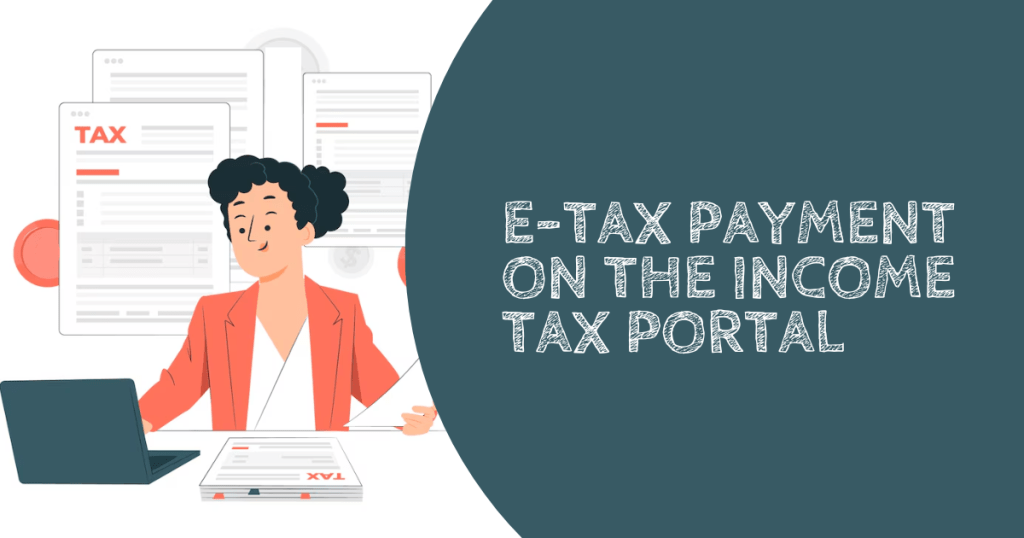ITR-2 is an Indian Income Tax Return Form used by individual taxpayers and Hindu Undivided Families (HUFs) who do not have income from Business or Profession (PGBP).
What is ITR?
ITR stands for Income Tax Return. It is a form used by the taxpayers to report their income, claim deductions, and pay taxes to the Income Tax Department (ITD) of India.
What are ITR forms?
ITR forms are prescribed formats notified by the ITD for filing income tax returns. The applicable form depends on the type of taxpayer and the nature of their income.
Different forms are applicable to different categories of taxpayers based on their sources of income.
Applicability of ITR-2 Form
ITR-2 is applicable to Individuals and HUFs who do not have income from Profits and gains of Business or Profession.
Who should file ITR-2?
Applicable for Individuals and HUFs having:
- Income from Salary/Pension.
- Income from House Property.
- Income from Capital Gains.
- Income from other sources.
- Income of other person (spouse or minor child) – if such income falls in any above category.
Who should not file ITR-2?
Not applicable for Individuals and HUFs having:
- Income from Business or Profession (In such cases, ITR-3 or ITR-4 is applicable depending upon conditions).
Key Features of ITR-2 are summarized in the Table Below:
| Particulars | Details |
| Applicable to | Individuals and HUFs not having income from business or profession |
| Source of Income | Salary, House Property, Capital Gains, Other Sources, Clubbed Income |
| Business or Professional Income | Not allowed (Use ITR-3 or ITR-4) |
| Residential Status Covered | Resident, Non-Resident and Not Ordinarily Resident |
| Capital Gains Reporting | Required if Capital Gains exist |
| Dividend Income Reporting | Required if Dividend is received |
| Carry Forward of Losses | Allowed for House Property & Capital Gains Losses |
| Assets & Liabilities (Schedule AL) | Required if Total Income exceeds 50 lakhs (for Residents) |
| Foreign Assets (Schedule FA) | Mandatory for Resident & Ordinarily Resident (ROR) holding foreign assets |
| Alternate Minimum Tax (AMT) | Applicable if conditions fulfilled |
| Due Date (Non-Audit Cases) | 31st July of Assessment Year |
| Due Date (Audit Applicable) | 31st October of Assessment Year (Only if Audit applicable for other reasons) |
| Mode of Filing | Electronically – with or without DSC or via E-verification |
| Filing Not Allowed | For Individuals & HUF having Business or Professional Income |
Latest Updates in ITR-2 for AY 2024-25 (Summarized)
| Particulars | Changes Introduced |
| Residential Status | Detailed reporting like number of days stayed in India, Residential Category, etc. |
| Capital Gains | Separate reporting of scrip-wise details for shares & mutual funds sold. |
| Foreign Assets & Income | Mandatory disclosure of foreign assets, foreign income, and foreign tax relief. |
| Dividend Income | Separate schedule for reporting dividend income year-wise. |
| Crypto & Virtual Assets | Disclosure of Income from Virtual Digital Assets (VDA). |
| Agricultural Income | Additional details required if agricultural income exceeds ₹5,000. |
New Excel Utility for ITR-2 Filing
What is Excel Utility?
Excel Utility is a tool provided by the ITD to help taxpayers file their ITR offline in an easy and systematic way.
The updated Excel-based utility for ITR-2 has been released.

The deadline for filing ITR-2 for AY 2025-26 is 31st July 2025.
Some of the key features of the new Excel Utility are mentioned below:
- User-friendly interface: Easy to fill data with structured format and guidance
- Auto calculations: Automatic calculations of tax, interest and surcharge.
- In-built validation: Error checks for incorrect or missing data.
- Predefined Schedules: Separate sheets for different income heads and disclosures.
Structure of ITR 2 Form
- Part A: General Information
- Schedule S: Salary Income Details
- Schedule HP: Income from House Property
- Schedule CG: Income under Capital Gains
- Schedule 112A:
- Schedule 115AD:
- Schedule OS: Income from Other Sources
- Schedule CYLA: Income after set off of Current Year Losses
- Schedule BFLA: Income after set off of brought forward unabsorbed losses
- Schedule CFL: Losses to be carried forward to future assessment years
- Schedule VIA: Deductions under Chapter VIA of the Income Tax Act
- Schedule 80G: Donations eligible for deduction under Section 80G of the Income Tax Act
- Schedule 80GGA: Donations for scientific research or rural development
- Schedule AMT: Alternate Minimum Tax payable under Section 115JC of the Income Tax Act
- Schedule AMTC: Tax credit under Section 115JD of the Income Tax Act
- Schedule SPI: Income of spouse/minor child/son’s wife which is to be clubbed with the taxpayer’s income and filed
- Schedule SI: Income chargeable to tax under special rates
- Schedule EI: Incomes exempt from tax
- Schedule PTI: Details of pass through status of Business Trust under Section 115UA or Investment Fund under Section 115BUB
- Schedule FSI: Income arising or accruing outside India
- Schedule TR: Details of taxes paid outside of India
- Schedule FA: Details of foreign assets and income from sources outside of India
- Schedule 5A: As per the Portuguese Civil Code, apportionment of income between spouses
- Schedule AL: If total income exceeds ₹50 lakh, details of assets and liabilities of the taxpayer at the end of the year have to be provided
- Schedule tax deferred on ESOP: Under Section 80-IAC, details of the tax-deferred on ESOPs received from the eligible start-ups is to be provided here.
- Part B-TI: Computation of the Total Income
- Part-B-TTI: Computation of the tax liability on the above total income
- Tax Payments -Details of advance tax, tax deducted at source, tax collected at source and self-assessment tax paid.
- Taxpayer Declaration
Documents needed to file ITR-2
- Form 16 : which is issue by the employers during the given financial year.
- Form 26AS and AIS : to be downloaded from the income tax portal itself. These provide details about the various transactions entered into by the taxpayer that have been reported, including TDS, interest earned, dividends, capital gains etc. The taxpayer needs to match the details in Form 16 with Form 26AS.
- House Rent receipts
- Bank Statements : Interest from bank account details either from savings accounts or deposits.
- Proofs of deductions : Exemptions and allowances being claimed like House Rent Allowance, investment payment receipts and insurance premium receipts to claim the deductions under Section 80C, 80D etc. While there is no need to attach these supporting documents to the ITR on submission, it is essential to have these documents in handy in case the taxpayer is required to produce them before tax authorities on assessments, inquiries etc.
- Set off and carry forward of losses : the taxpayer has to ensure proper documentation of losses being carried forward to next assessment year and also the availability of ITR V acknowledgement of the loss of the previous year is being set off with current year profits.
- Capital Gains : documents pertaining to capital gains transactions that have been undertaken by the taxpayer in the year and also the details for any exemptions claimed from taxation on capital gains are to be maintained.
- PAN card and Aadhaar card : it is mandatory for taxpayers to link PAN card and Aadhaar card on the income tax website.
Process for filling ITR-2
- Go to the income tax e-filing website.
- Log in to your account or register an account.
- Click on the ‘e-File’ tab, then the ‘Income Tax Returns’ and then select ‘File Income Tax Return’.
- Select the Assessment Year from the dropdown menu, the current assessment year is 2025-26 applicable for the financial year 2024-25.
- Select the ‘Online’ mode of filing and click on ‘Continue’
- Click on the ‘Start New Filing’ option.
- Select the status applicable to you out of, ‘Individual’, ‘HUF’ and ‘Others’.
- Select ITR-2 and click on proceed. Choose the option applicable to you:
- Whether filing ITR because income exceeds the basic exemption limit.
- Filing a return to comply with provisions of Section 139 of the Income Tax Act.
- Others.
- The details of AIS/Form 26AS have to be verified with the pre-filled information. The details have to be carefully review by the taxpayer. Any changes, if necessary, have to be made.
- The taxpayer has to e-verify the return once it has been submitted. It is important to remember the validation of your bank account for the smooth receipt of refunds.
- Filing of the return is being done on or before the applicable due date. There can be repercussions for not filing within the due date like late fees, losses not getting carried forward etc.
Filing an ITR can be a huge task especially if no careful research is done. It is best to avail help of a professional if required.
FAQs
- Can a salaried person file ITR-2?
Ans. Yes, a salaried person can file ITR-2, if they have income from sources other than Business or Profession(PGBP).
- Is Excel Utility mandatory for filing ITR-2?
Ans. No, it is not mandatory, it is just one of the available options. Taxpayers can also use other methods.
- Can I revise ITR-2 after filing?
Ans. Yes, it can be revised by filing a revised return, if any mistake was made while filing the original return using form ITR-2.


